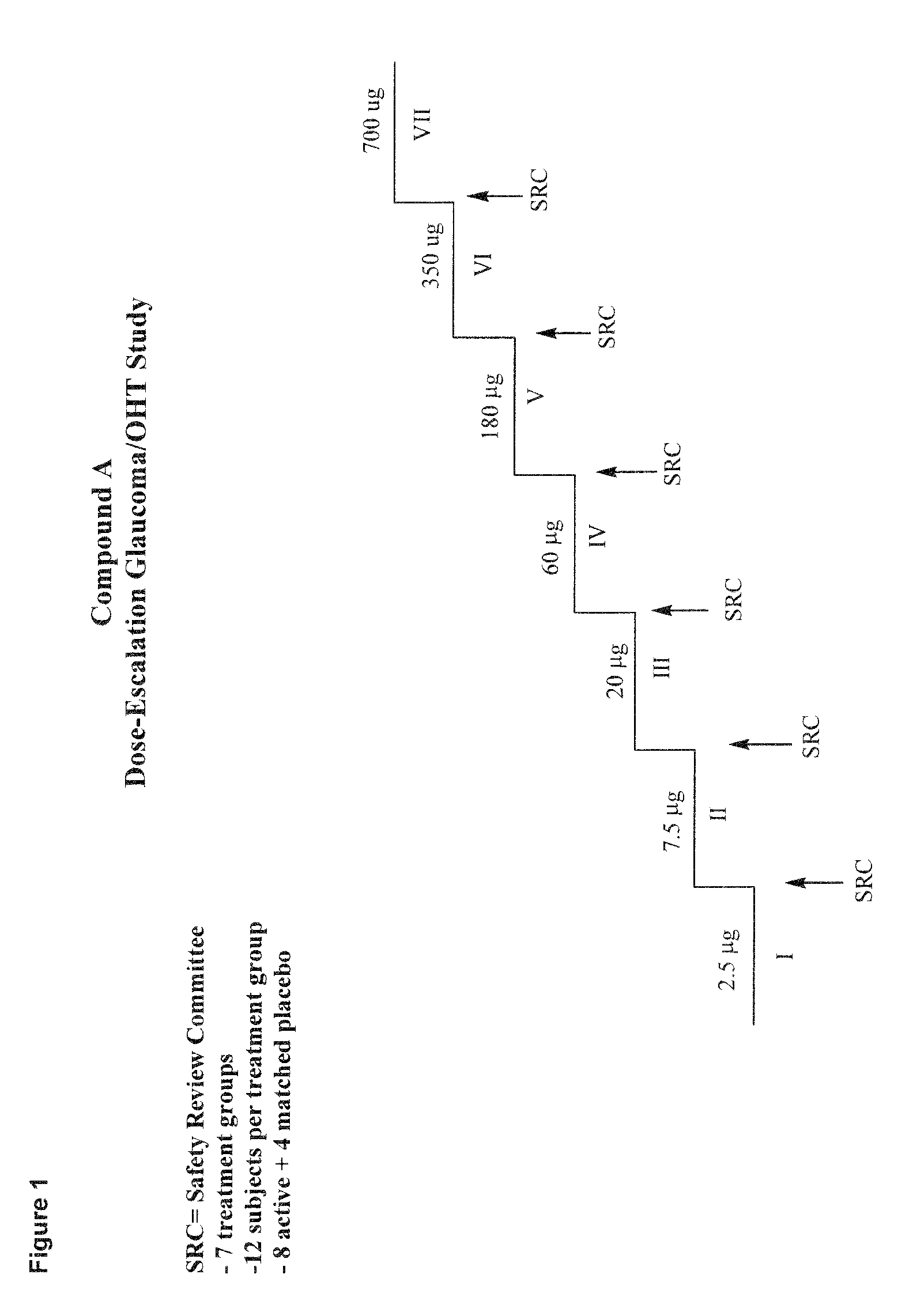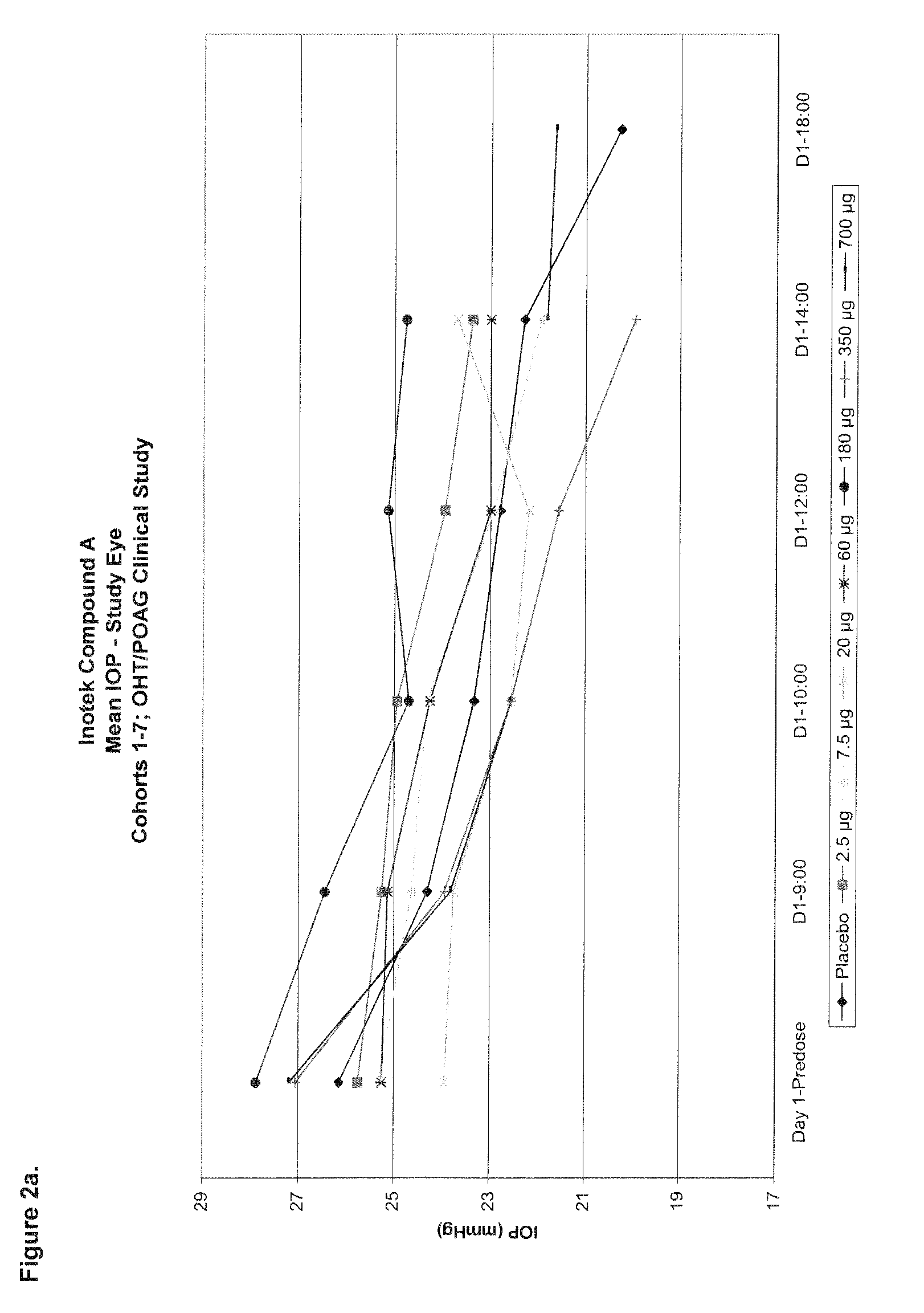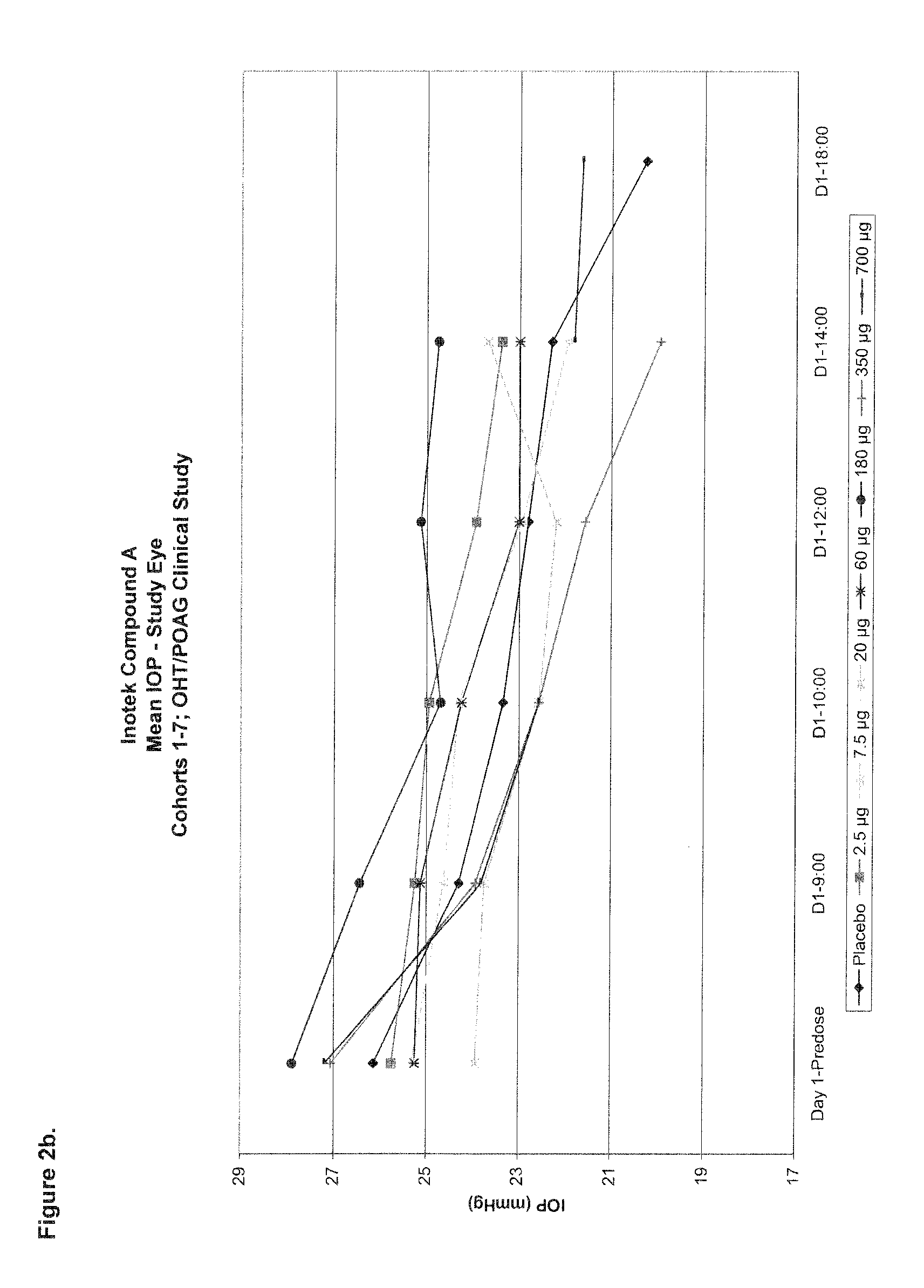Method of reducing intraocular pressure in humans
a technology of intraocular pressure and human body, applied in the field of human intraocular pressure reduction, can solve the problems of affecting the normal functioning of the body, and affecting the function of the body,
- Summary
- Abstract
- Description
- Claims
- Application Information
AI Technical Summary
Benefits of technology
Problems solved by technology
Method used
Image
Examples
formulation example
[0146]Formulation is 1 mg of Compound A for every 20 mg of Hydroxypropyl β-Cyclodextrin (HPβCD) (i.e., 1:20 wt / wt) reconstituted with 0.9% Saline for Injection, USP, at concentrations indicated below.
Clinical DoseCompound AOcular Dose Volume(mcg / eye)(mg / mL)(μL)2.50.05507.50.1550200.4050601.2501803.6503507.0507007.02 × 50
Results of the Clinical Trial
[0147]The results of the clinical trial are presented in the figures and further as described below.
[0148]The dose escalation scheme over the 7 treatment groups of the multi-center, randomized, double-blinded clinical study is shown in FIG. 1. Twelve subjects were randomly assigned to each treatment group: 8 subjects received Compound A and 4 subjects received placebo. Escalation to each successive treatment group was predicated upon the approval of the Safety Review Committee of the safety data from the most recently completed cohort.
[0149]The mean and median IOP (mmHg) in the study eye at each time point across all treatment groups is s...
synthesis examples
[0162]2′,3′-Isopropylidene-N6-cyclohexyladenosine: A solution of 6-chloroadenosine (2.58 g) and cyclohexylamine (5 g) in ethanol (20 ml) was heated at reflux for 6 hours then cooled to room temperature. The reaction mixture was concentrated in vacuo and the resultant residue was diluted with water (50 ml) and ethyl acetate (300 ml). The organic layer was separated and the aqueous layer was extracted with ethyl acetate (2×50 ml). The combined organic layers were washed with water (1×30 ml), dried over sodium sulfate, concentrated in vacuo and dried under vacuum to provide N6-cyclohexyladenosine as a white solid (2.600 g). N6-Cyclohexyladenosine (2.6 g) was diluted with acetone (30 ml) and to the resultant solution was added 2,2-dimethoxypropane (12 ml), followed by D-camphorsulphonic acid (3.01 g) and the mixture was allowed to stir at room temperature for 18 hours. The reaction mixture was concentrated in vacuo and the resultant residue was diluted with ethyl acetate (150 ml), then ...
example
Binding Studies
Cell Culture and Membrane Preparation
[0178]CHO cells stably transfected with human adenosine A1 receptor are grown and maintained in Dulbecco's Modified Eagles Medium with nutrient mixture F12 (DMEM / F12) without nucleosides, containing 10% fetal calf serum, penicillin (100 U / mL), streptomycin (100 μg / mL), L-glutamine (2 mM) and Geneticin (G-418, 0.2 mg / mL; A2B, 0.5 mg / mL) at 37° C. in 5% CO2 / 95% air. Cells are then split 2 or 3 times weekly at a ratio of between 1:5 and 1:20.
[0179]Membranes for radioligand binding experiments are prepared from fresh or frozen cells as described in Klotz et al., Naunyn-Schmiedeberg's Arch. Pharmacol, 357:1-9 (1998). The cell suspension is then homogenized in ice-cold hypotonic buffer (5 mM Tris / HCl, 2 mM EDTA, pH 7.4) and the homogenate is spun for 10 minutes (4° C.) at 1,000 g. The membranes are then sedimented from the supernatant for 30 minutes at 100,000 g and resuspended in 50 mM Tris / HCl buffer pH 7.4 (for A3 adenosine receptors:...
PUM
| Property | Measurement | Unit |
|---|---|---|
| Fraction | aaaaa | aaaaa |
| Fraction | aaaaa | aaaaa |
| Fraction | aaaaa | aaaaa |
Abstract
Description
Claims
Application Information
 Login to View More
Login to View More - R&D
- Intellectual Property
- Life Sciences
- Materials
- Tech Scout
- Unparalleled Data Quality
- Higher Quality Content
- 60% Fewer Hallucinations
Browse by: Latest US Patents, China's latest patents, Technical Efficacy Thesaurus, Application Domain, Technology Topic, Popular Technical Reports.
© 2025 PatSnap. All rights reserved.Legal|Privacy policy|Modern Slavery Act Transparency Statement|Sitemap|About US| Contact US: help@patsnap.com



